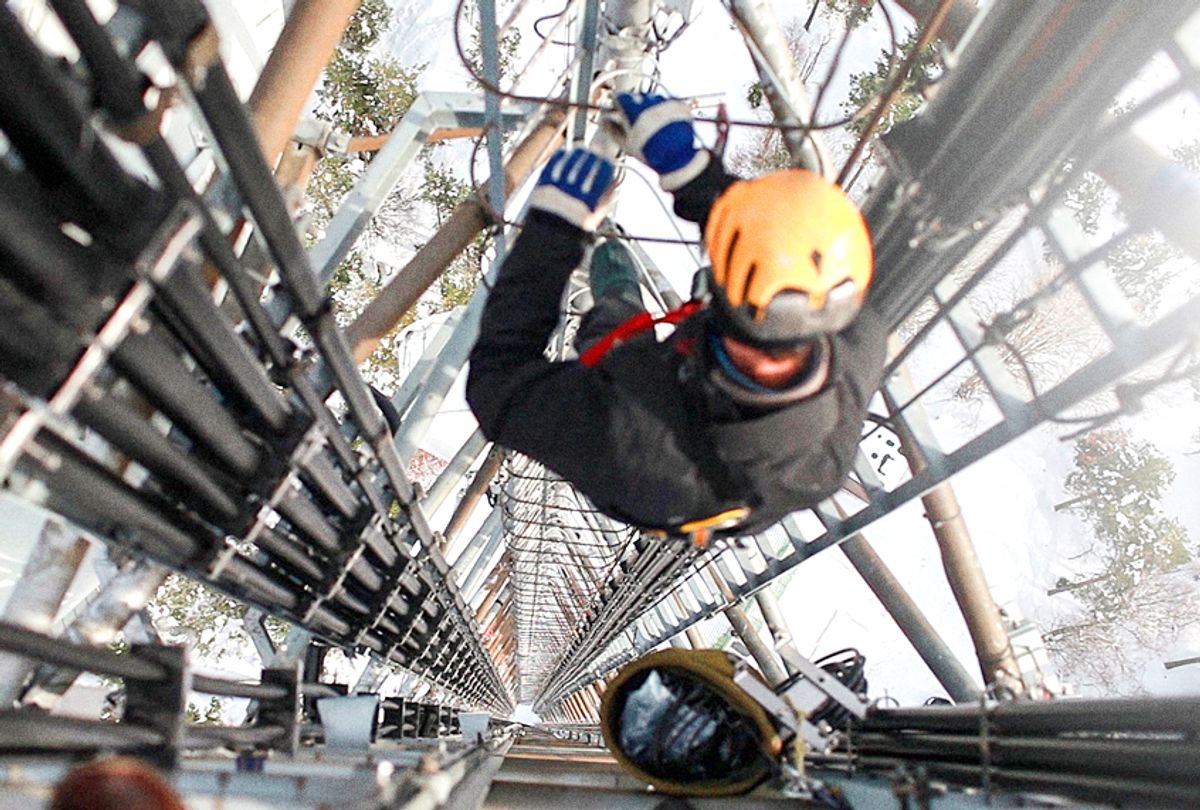Read more articles from the DC Report here.
 Workers on communications towers are falling to their deaths doing work required by the Federal Communications Commission to help expand cell phone and wireless service in our country.
Workers on communications towers are falling to their deaths doing work required by the Federal Communications Commission to help expand cell phone and wireless service in our country.
Brachton Barber, 23, of Longwood, Fla.; Benito Rodriguez, 35, of Tampa, Fla., and Marcus Goffena, 31, of Sidney, Ohio, were killed in September in Miami Gardens, Fla. while replacing an antenna for WSVN-Channel 7. Stephen Lemay, 56, of Blaine, Wash., died in April when the 1,980-foot broadcast tower in Fordland, Mo., used by Ozarks Public Television collapsed.
Almost 1,000 television stations are scheduled to be moved to new channels by July 2020, and tower climbers are working on communications towers that can be 2,000 feet high. One World Trade Center is 1,776 feet high.
“You can be gambling at best with the reliability of your station’s service, and at worst you’re gambling with people’s lives,” said Bill Hayes, director of engineering for Iowa Public Television.
The chairman of the National Association of Tower Erectors has urged Congress not to rush the timetable on work on the television station towers.
“There is one inescapable fact,” Jim Tracy, the association chairman, said in September. “There are not, at present, enough qualified workers to perform all the tower work we will be required to complete.”
But 56 members of Congress, including Rep. Steve Scalise (R-La.) and Rep. Darrell Issa (R-Calif.), have urged FCC Chairman Ajit Pai to have the tower work done by July 3, 2020. The work could expand broadband access to rural residents.
“Ultimately, it’s a matter of economic necessity in today’s globally-connected world,” they wrote.
Commercial TV and radio stations spent almost $29 million in federal lobbying in 2017.
Workers on towers may climb 100 to 2,000 feet. They risk falls, structural collapses, electrical hazards and bad weather.
OSHA doesn’t have rules specifically written to protect communications tower workers. The agency began working on such standards during the Obama administration after 13 communication tower workers were killed in 2013, more than in the previous two years combined.
“Tower workers have a risk of fatal injury perhaps 25 to 30 times higher than the risk for the average American worker,” said David Michaels, then an assistant labor secretary. “This is clearly unacceptable.”
Thomas Fuller of Illinois State University said tower climbing is a fairly unregulated industry with little oversight or enforcement. Three people have been killed so far this year on towers.
“As towers age and additional antennae are added, they become more hazardous,” Fuller told OSHA. “Often, workers and tower climbing companies are hesitant to report structural problems for fear of losing the work. There is no federal agency to report unsafe structural conditions to and expect a timely response.”




Shares